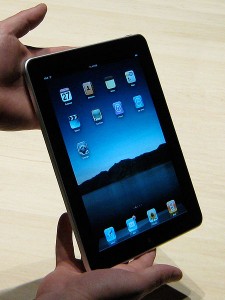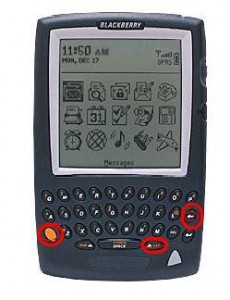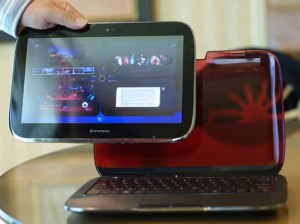The W&M Tech Byte Part 2: iWhat? What’s the hype with the iPad?
Hey guys, welcome back! I guess if you’re reading this blog, you guys actually liked the first one and are finding this blog kind of useful? Yes? Maybe…or maybe you just saw my face on the homepage and decided to click on the link. Whatever it is, I decided to write a new one, this time on a topic that I’ve been quite curious about for a while now.
If you look at any tech website (what am I saying, why would you guys, who have a life look at tech websites?) but if by the off chance you guys have ventured into Cnet, Gizmodo, or even PC World, you would find it ridden with articles about the new iPad, its usefulness (or non-usefulness) and every article under the sun about its utility.

Perhaps the hype about the iPad lies in the fact that it's a device that's never before been seen on the market, and has the potential to be industry changing.
It seems, at least for the most part, that the world is obsessed with this new craze, a sort of “iPad fever.”
But why? There’s nothing new about the iPad. The design isn’t particularly new, we’ve seen it before in the iPhone and the iPod Touch. Overgrown touch screen, one home button. The insides aren’t necessarily new either. The processor is virtually the same as the one in the newest iPhone and iPod touch. Even the operating system, the part of the device that users come into contact with the most, is the exact same as the iPhone. Basically, when people say it’s just a bigger iPod Touch, they weren’t kidding.
Yet, perhaps the reason why there’s such a huge hype behind the iPad is because of its ingenuity.
People need to notice that this is a product that’s never before been seen on the market. If recent trade expos have shown us anything, it’s that along with things like 3D TV, touch screen tablet computers are a new genre of technology that companies are dying to enter products into. More specifically, Apple, a company who’s slowly built up a huge fan base using the iPod, may have the consumer support necessary to succeed where companies like Compaq and Sony have previously failed introducing similar products.
In addition, most every review site agrees that the iPad does a lot of different things, but sucks doing all of them. Sure, it will create a Word Document, play movies, become an e-reader, etc, etc, but these are things that we as 21st century individuals already have other devices doing. And most of the time, these other devices do these tasks better.
But it’s the possibilities that the iPad opens up, that has tech sites and others buzzing with excitement. Here is a device that, albeit a weak one, attempted to combine all these aspects of our digital lives into one handy device, and it’s done it relatively seamlessly. The iPad has the potential to become one of the daily essential gadgets in our lives, and it is this potential to become something great that has Apple enthusiasts and others worldwide on their toes.
In a sense, the iPad can be compared to the smartphone. When the Blackberry first came out, we all looked at it in wonder.

Anyone remember when the Blackberry was all the rage? We just take it for granted now I guess.
Sure, it integrated email, internet, scheduler, games, all into a phone. It was basically a phone that wanted to be a laptop, PDA, and pocket PC all in one. The consumer reaction to the first Blackberries was relatively apathetic. The miniaturized keyboard and the small black and white screen, to name a few, were things that, quite frankly, turned consumers off. But again, the potential of the Blackberry as the first smartphone, was what really helped its success take off as businesses soon found their usefulness.
But what does all this mean for college students, especially College of William & Mary students? Well…essentially, nothing. The iPad in its current form, is not something college students need, or require, unless one just wants the extra hardware to do things with.
Again, it’s important to repeat the words of tech magazine PC World, when they say that the iPad isn’t a replacement for a full fledged laptop. In fact, Apple itself doesn’t expect for you to use this as a replacement, as when you first turn on the iPad, it tells the user to connect it to a laptop with iTunes so it can Sync. It has iWork, but it can’t produce professional grade word documents. It has a virtual touch-screen keyboard that is the best in its class, but it is not a viable replacement for a physical keyboard. Most importantly, the lack of printing and multitasking kind of seals the deal on that.
In the end, for college students, the iPad is something that people will buy just because it’s made by Apple or because they just want the extra, smaller hardware to carry around. It won’t replace an iPod or smartphone, for one, it’s significantly larger and harder to carry around than an iPod Nano and it doesn’t have a forward facing camera for Skype.

If you haven't spent hundreds of dollars on an iPad yet, I suggest you wait for this little gadget due out later this year. The Lenovo U1 is a cross between a touchscreen tablet (essentially the iPad) and a netbook. The tablet is actually detachable from the base.
In my personal opinion with tech gadgets, it’s often nice to wait and see what the second, even third-generation models have to offer before investing hundreds of dollars in a new tech gadget. Especially with Apple, who comes out with new generation models every year or so, we find that second-generation models tend to take into account consumer demands and are generally more robust than previous models. So, if you’re in the market for an iPad, a couple key things to keep in mind. First, an iPad is certainly not a viable replacement for a laptop, especially for a laptop that a college student needs. Secondly, although the first-gen device looks nice just to show off to all your friends, wait at least until the second-generation comes out next year until you invest in one. (Trust me, you’ll thank me then.) And third, another benefit of waiting, you’ll have a chance at what the competition has to offer. Dell, Sony, and Microsoft are all thinking of coming out with similar devices. My favorite to check up on is the Lenovo U1.
UPDATE: It’s recently been announced by Lenovo that the development behind the Linux-based OS behind the tablet portion of the U1 Hybrid is currently being stalled, so consumers should expect to see this netbook out in the public much later than initially anticipated. On the bright side, instead of a Linux based system (the original netbook was supposed to run Windows when attached to the base and Linux-based Skylight when detached) Lenovo seems to be thinking of switching their hardware over to Android, Google’s current mobile operating system.
Comments are currently closed. Comments are closed on all posts older than one year, and for those in our archive.




When anyone asks me for tech advice, I make it a point to NEVER base it products that are supposed to be available in the future.
As of late September 2011, The Lenovo U1 is still not available anywhere in the US, as far as I know, and was apparently only briefly sold in China for about $1,300 US. The iPad in the meantime has had one major revision, numerous Droid based Pads have been released and the price of full featured laptops has continued to plummet.
This is not the only example of the old “check is in the mail” syndrome in the modern tech world… user beware.